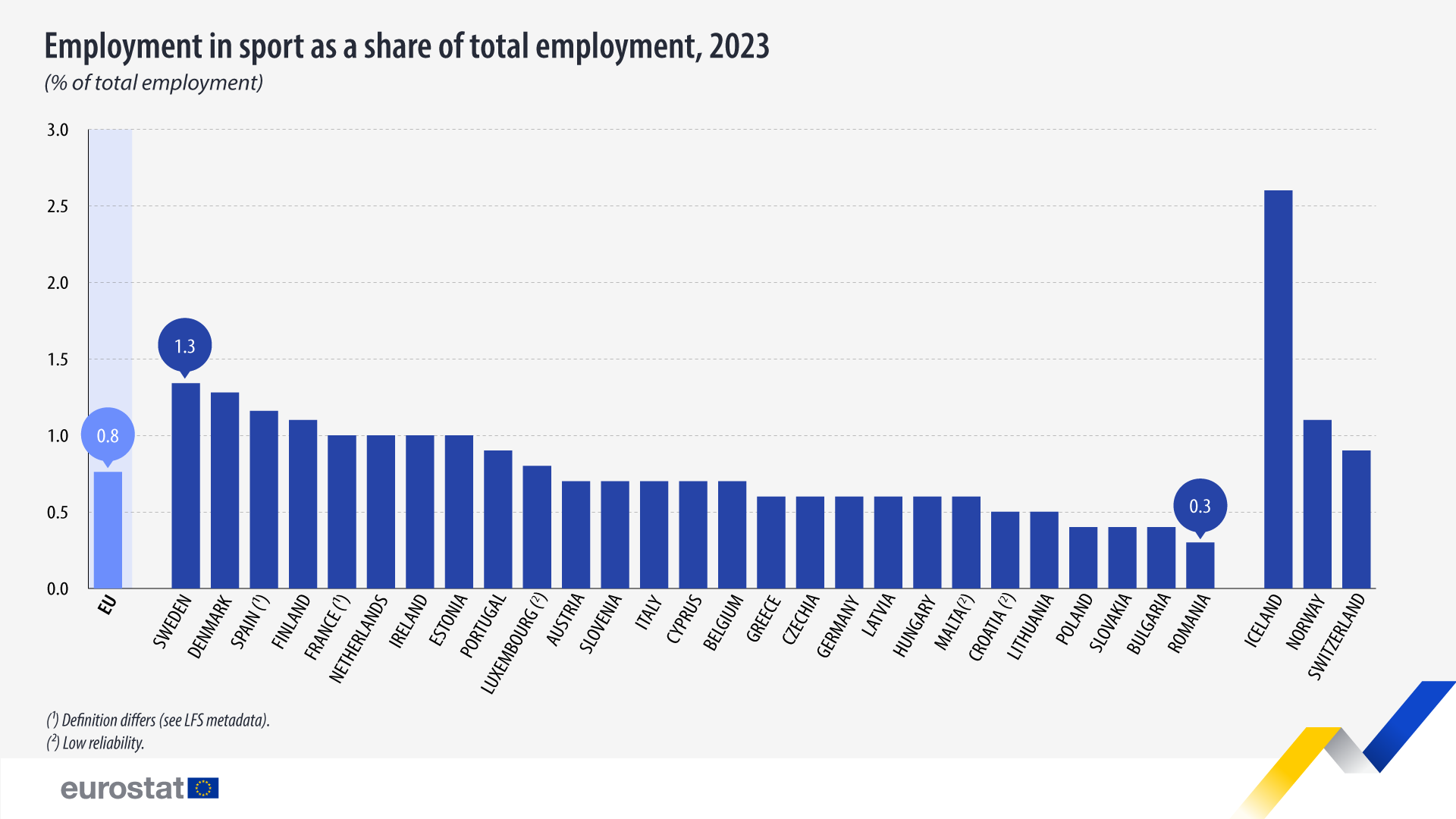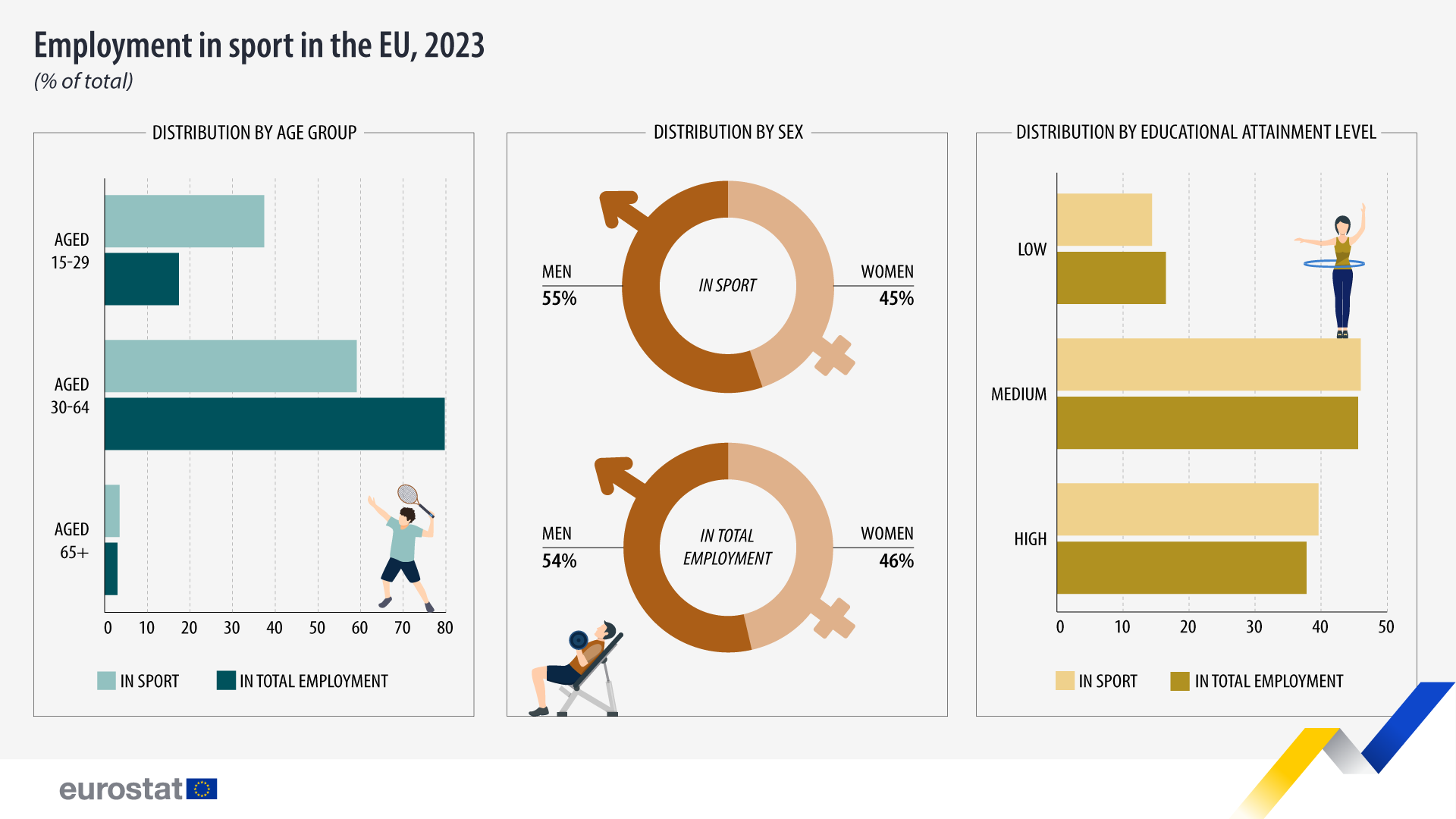1.55 million people employed in sport in 2023

In 2023, 1.55 million people were employed in the sports sector in the EU, representing 0.76% of total employment. Compared with 2022 (1.51 million), the number of people employed in the sports sector increased by 2.2%.
Among the EU countries, Sweden had the highest share of people working in the field of sports (1.33% of total employment), followed by Denmark (1.25%) and Spain (1.16%).
In contrast, the lowest shares of people employed in the sports sector were registered in Romania (0.28% of total employment), Bulgaria (0.37%) and Slovakia (0.40%).
Source dataset: sprt_emp_sex
Over one-third of sports workers under the age of 30
Employment in the sports sector differs from total employment in terms of age composition. More than one-third (37.4%) of people employed in sport were aged 15 29, which is more than twice the share reported in overall employment (17.4%) for the same age group in 2023.
The majority of those employed in sport were aged 30-64, accounting for 59.1% of all sport workers, which was 20.6 percentage points (pp) less than the share of the same age group in the total employment (79.7%). People aged 65+ accounted for 3.5% in the sports sector and 3.0% in total employment.
Source datasets: sprt_emp_age, sprt_emp_sex, sprt_emp_edu
More men were employed in the sports sector than women (55.2% and 44.8%, respectively), leading to a slightly larger gender employment gap of the population employed in this sector compared with overall employment (53.6% and 46.4%, respectively).
In terms of educational attainment level, sports workers exhibited characteristics similar to those in the total employment. Nearly half (45.9%) of those employed in sport had a medium level of education (International standard classification of education (ISCED), levels 3-4), 0.3 pp more than in total employment.
Those with higher (tertiary) education (ISCED levels 5-8) made up 39.6% of sport workers, which was 1.8 pp higher in sport than in total employment.
People with lower education (ISCED levels 0-2), accounted for 14.4% of employment in sport (2.1 pp lower than in total employment).
This article is published to mark the opening of the 2024 Summer Olympic Games.
For more information
Methodological notes
- Employment in sport includes sport-related occupations in the sports sector e.g., professional athletes, professional coaches in fitness centres, non-sport occupations in the sports sector, e.g., receptionists in fitness centres, and sport-related jobs outside the sports sector, e.g., school sport instructors.
- The sport sector includes economic activities and occupations such as in sport teams and clubs, trainers, independent athletes, fitness centres and activities for the promotion and management of sport events.
- New methodology from 2021 for EU Labour Force Survey.
- Luxembourg, Croatia and Malta: low reliability for 2023.
- France and Spain: 2021-2023 definition differs (see Labour Force Survey methodology metadata).
If you have any queries, please visit our contact us page.


